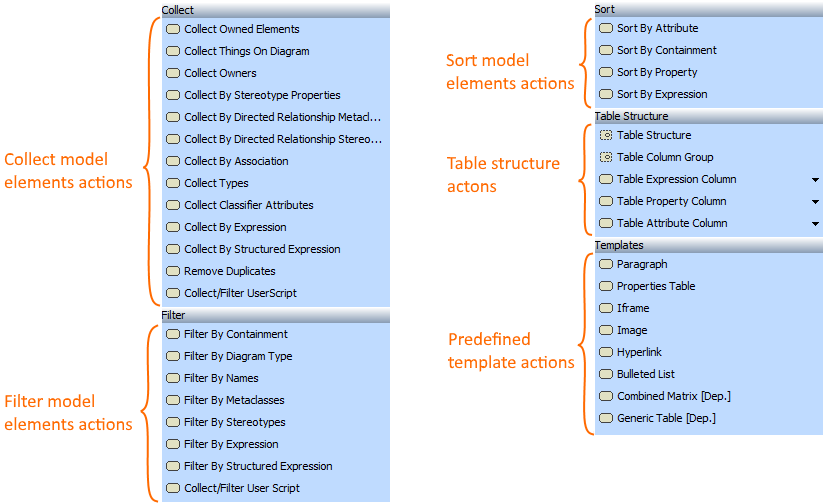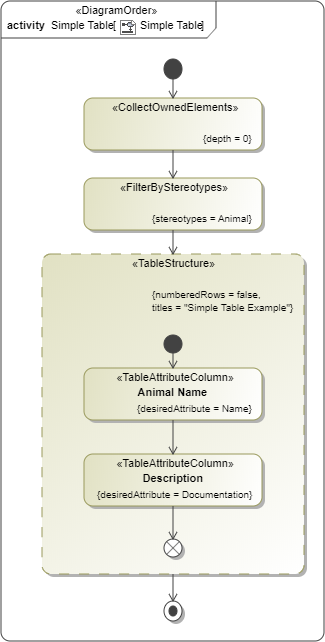On this page
The Collaborator Viewpoint Method Diagram is a specialized activity diagram that defines a Viewpoint. This diagram allows you to obtain model data using several types of operators and present the obtained data as tables, images, paragraphs, lists, and sections in a web portal.
Once a Viewpoint is applied to a View, exposed elements can be operated by three types of operators: Collect, Sort, and Filter. You can use these operators to expand or narrow the collection of elements that are used in a Viewpoint method. After the data is collected, filtered, and/or sorted, use the Table Structure and Template operators to adjust how the data is displayed. The figure below shows how available operators are grouped in the diagram palette.
The diagram palette containing operators available in a Viewpoint Method Diagram.
Collect operators
In a Viewpoint Method Diagram, Collect operators are used to divide the elements in an exposed Package into the elements that will be presented in a web portal and the elements that will be ignored. This way you can expand or narrow the collection of elements used in a Viewpoint method. There are a number of collection methods, each of which have their own Call Behavior Action.
Filter operators
Filter operators allow you to narrow the scope of data to the data of interest according to one or multiple filter criteria of various types (such as stereotype, name, metaclasse, etc). In most cases, the "FilterBy..." operator needs to have the "CollectBy..." operator preceding it so that the filter operator would have the data set to look through and filter.
Sort operators
Sort operators allow you to sort a data set according to the desired property. Data can be sorted by attribute, property, or expression. Note that first you have to collect elements in order to have a data set to sort.
Table Structure operators
Table Structure operators allow you to create custom tables by using various table components. The Viewpoint Method Diagram below shows the example of a simple table with only two columns,
The example of a simple table with two columns: Animal Name and Description.
Template operators
After data is collected, filtered, and/or sorted, several operators can be used to adjust how the data will be displayed. Template operators are used in a Collaborator Viewpoint Method Diagram to determine in what format data will be displayed in the document views - as paragraphs, properties tables, images, bulleted lists, etc.

